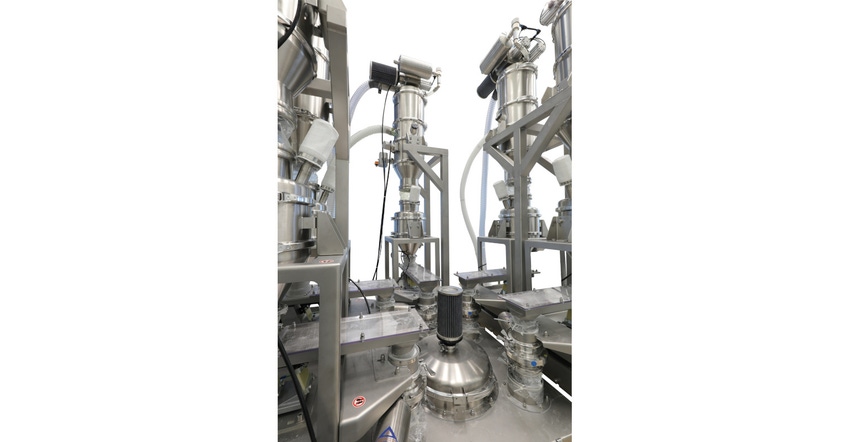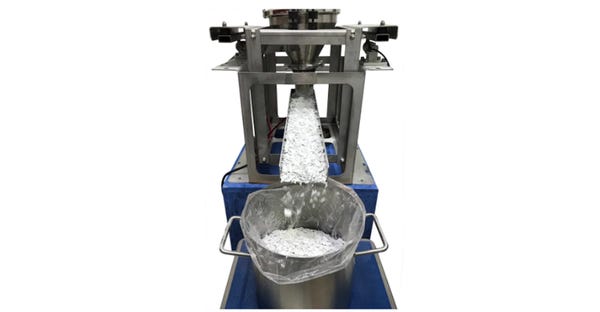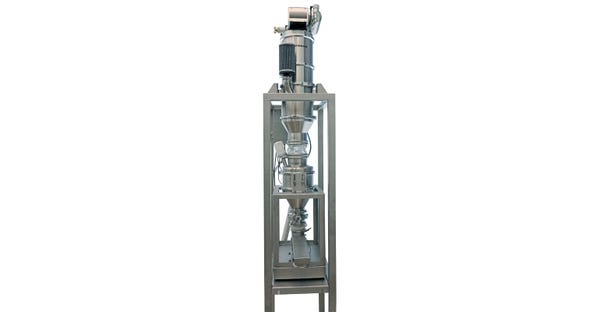Material Costs Drive Heavy Demand for Automated Weighing and Feeding
As risks of overages and underages garner more attention, powder processors are automating weighing and feeding.
May 17, 2023

David Nichols, vice president of sales and marketing, Volkmann USA
As the weight of ever-increasing costs becomes heavier and more difficult for companies to pass along to the consumer, tolerance for imprecise measurement of materials and other resources is no longer acceptable. In today's economy, accounting for every ounce of every component has become vitally important. Identifying sources of waste and adding automation in key areas such as weighing and feeding supports efficient processing, cuts costs, and assures quality production.
Material waste commonly occurs as spillage due to manual handling such as when receiving material from suppliers, during transfer from storage into a hopper, mixer, reactor, bag dumping station, or other equipment, and when weighing materials as batches. A food manufacturer recently eliminated the potential for these material losses by replacing manual handling with automation in several key places. A pneumatic vacuum conveying system automatically transfers ingredients from bulk carriers and railcars to storage silos. A bulk bag unloader automatically empties the ingredients directly into the conveying system for transfer either to storage or into the process. An integrated vibratory weigh feeder automatically measures the amount of each ingredient specified for each batch. Automation replaced the scooping, spilling, and dumping involved in weighing with an approach that yields consistently accurate, repeatable weighments and cuts the potential for material losses as waste.
Human Errors Lead to Overages in Weighing
Losses due to spillage in powder handling pale in comparison to the potential for losses at scale due to human errors that lead to overages in weighing. Consider a worker scooping powdered milk from a large bag into a small bin then weighing the small bin. As a process with an inherently high margin of error in repetitive, manual human application, the process depends highly on the skill, experience, and consistency of the worker to achieve an accurate measurement. Different workers on different shifts may load varying amounts of ingredients into the process. Workers commonly add slightly more material than is needed. Though it may or may not affect product quality depending on the processing window, this overage often adds up to significant losses over time.
For example: If this food manufacturer uses a manual hand scoop method for adding powdered ingredients to the mixer and the measurement accuracy is 5%, which means that for every 100 units of milk powder added, the actual amount added can allow an overage of up to 105 units. If the powdered milk costs $6.63 per pound and the recipe calls for 500 pounds per day then the company would be using up to 525 pounds each day, on average, for a cost of up to $3,480 per day.
Now the company upgrades to an automated weigh feeder with a measurement accuracy of 0.5%, 10 times more accurate than the manual method. This means that for every 100 units of milk powder added, the actual amount added can reach up to 100.5 units.

With the more precise, automated weigh feeder, the company would be using up to 502.5 pounds each day, on average, for a cost of up to $3,332 per day. This yields a savings of $148 per day. Using an average of 25 working days per month, the cost savings total $44,400 in raw material costs alone that recur annually.
The same manual process that may lead to costly overweighments also may lead to underweighments. Using fewer materials than is called for in a recipe may, at a glance, seem less costly than using more, but delving deeper reveals that underweighments may be just as costly - and possibly more damaging.
Using the same example: The hand scoop method with the measurement accuracy of 5% means that for every 100 units of milk powder added, the actual amount added can also drop to as low as 95 units. If the processing window allows such wide variance without compromising product quality, then the recipe may be adjusted to use the lesser amount of milk powder as standard. But for most recipes, a 5% shortfall of an ingredient leaves reactions incomplete, causes nonuniformity in mixing, and leads to other problems such as clogs in the process equipment, excessive cleaning headaches, and an end product that fails to meet quality requirements. The cost to discard an entire batch as waste--which may exceed thousands upon thousands of dollars plus labor and lost time--renders any potential material savings earned by under weighing as painfully insignificant.
Now upgrade to the automated weigh feeding system with a measurement accuracy of 0.5% and the average weight on the low end drops to as low as only 99.5 units instead of 95 units. This ensures the recipe is followed precisely and consistently every time and that product quality is on-spec every time. Eliminating batch to batch inconsistencies and saving on material costs also creates a ripple effect through the entire process that improves overall efficiency and throughput yet cannot be fully quantified.
Automated Processes Can Still Generate Waste
Even automated processes with highly accurate weighing still typically generate waste. In years past, these waste streams were often landfilled without concern for the disposal costs or for environmental considerations. Today, as process equipment has advanced, along with the concern for sustainability in manufacturing, these waste streams are being reexamined as supplemental material sources and new revenue streams.

Instead of discarding off-spec product, for example, it is now not only possible but often viable to automatically collect it and return it upstream to the production process. Whether a batch or continuous process, the waste material may be collected in a hopper, conveyed to a lump breaker to return the material to a uniform particle size, then discharged into a vibratory weigh feeder for dosing or metering the material back into the process for mixing with virgin material. The weigh feeder may be adjusted to set the ideal ratio of reclaimed to virgin material as needed. This concept reduces material costs for uninterrupted, recurring savings. In other cases where off-spec material cannot be reused, it can often be repurposed. The fermentation waste generated during beer production contains proteins and fiber that can be dried, weighed, bagged, and sold to other companies as a nutritious flour or animal feed, for example. This diverts the waste from disposal and creates fresh, recurring revenue.
Summary
Automating weighing, feeding, conveying, and other processes offers significant, tangible returns in reduced material costs, increased throughput, labor savings, and improvements in quality and consistency, often with a return on investment in as soon as a few months. Replacing even a single manual operation such as weighing with the latest automated equipment positively and quantifiably impacts the entire process without committing to the investment of a fully automated facility.
David Nichols is vice president of sales and marketing for Volkmann USA. The company designs and manufactures pneumatic vacuum conveying systems, vibratory weigh feeders, and other process equipment. For more information, call 609-265-0101, email [email protected], or visit www.volkmannusa.com.
You May Also Like


